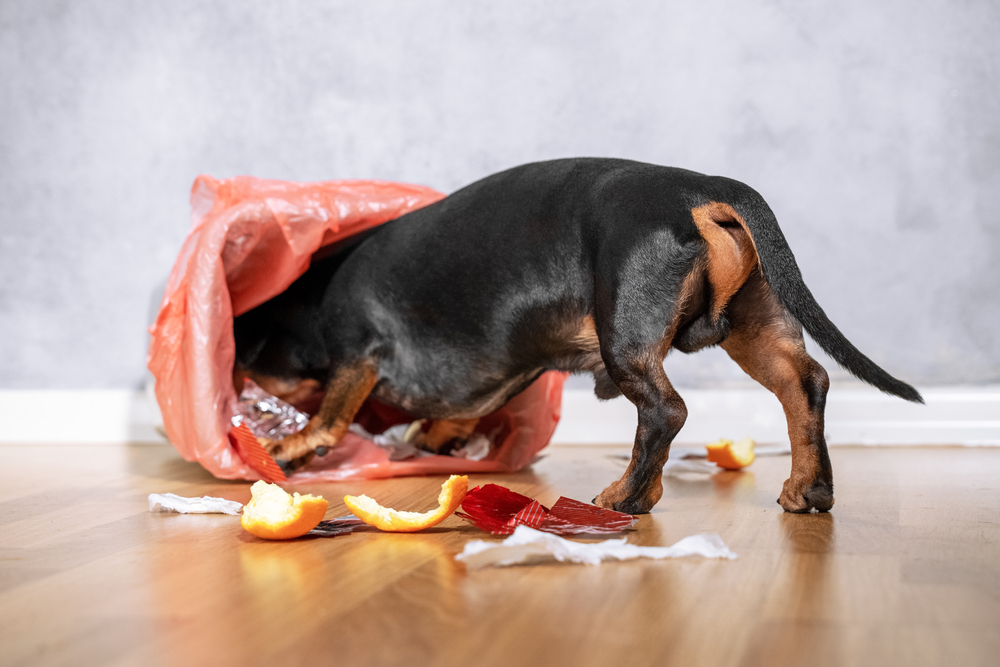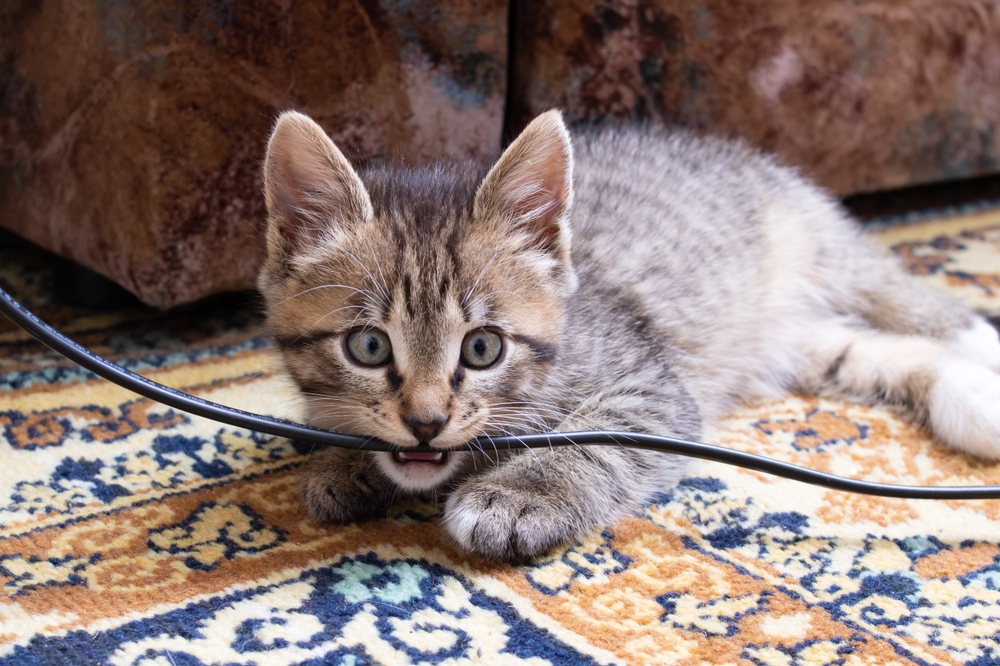Puppies, kittens, and new pets don’t come with pre-programmed knowledge about appropriate and inappropriate behavior and often find themselves in serious—sometimes life-threatening—trouble. Pet-proofing your new pet’s environment is the best way to protect them from themselves as they learn about their world.
Ensure your pet’s homecoming and initial adjustment period are safe and sound by following these 10 tips for pet-proofing success from Neighborhood Veterinary Centers.
#1: Use a crate to confine your pet
Crates or other secure confinement (e.g., exercise pen, small gated room) provide security for young pets and restrict their access to potential dangers. Your pet should be confined whenever they are resting or cannot be directly supervised.
Make your pet’s confinement a positive place by providing a safe, long-lasting toy or treat every time they go in their crate, pen, or room, and never use confinement as a “time-out” or punishment.
#2: Secure exits to prevent pet escape
Open windows, unlatched doors, and damaged fencing are opportunities for pet escape or serious injury. New pets should be confined to a limited area during their initial training, because accidents can happen quickly and lead to serious harm or death.
Check your home’s perimeter, including balconies, patios, and yards, and consider installing additional barriers such as pet gates and window guards during your pet’s training process. Inspect and repair fences and gates, and check underneath for loose areas or holes.
#3: Remove or cover electrical cords to prevent pet injury
Exposed cords can cause electrical shock and potential death. Remove any cords from your pet’s designated space and secure all others in your home with child-proof cord covers. Or, train yourself to unplug corded devices and appliances when not in use.
#4: Remove dangling cords and hanging items that could entangle your pet
Kittens and cats are especially attracted to hanging cords, strings, and rope-like decorations. But, what begins as innocent play may lead to strangulation. Tie up long blind cords and relocate wall hangings and other draped items.
#5: Store small items in a pet-safe cabinet or drawer
Chewing may seem like a nuisance, but that is how pets naturally explore their world. Small items such as coins, figurines, earbuds, remotes, batteries, thumb tacks, pens, pencils, and toys can quickly become choking hazards or cause internal perforation or intestinal blockages if swallowed.
Collect all small items and store them in cabinets, drawers, or child-proof organizers. Get in the habit of returning commonly used items to safe storage after each use.
#6: Keep medications and supplements out of your pet’s reach
Prescription and over-the-counter (OTC) medications are a common pet toxin and, unfortunately, as little as a few doses can be fatal. Despite their natural origins, vitamins and dietary supplements can also cause serious harm. Prevent accidental ingestion and overdose by storing all pharmaceutical items—including veterinary medications—in chew-proof containers inside closed cabinets. Never leave pills or tablets in plastic bags or on counter tops or nightstands.
#7: Identify and remove common pet toxins
Many everyday items are poisonous to pets. Identify and relocate common hazards, including those that hide in your basement or garage, such as:
- Household cleaners
- Home repair items (e.g., paint, caulk, varnish)
- Gardening supplies (e.g., fertilizer, cocoa bean mulch, weed killer)
- Rodent and insect baits
- Antifreeze, windshield deicer, motor oil, and coolant
- Toxic houseplants and flowers
For a more detailed look at common pet toxins, check out our previous article.
#8: Invest in pet-proof trash bins and tuck away waste baskets

Small waste bins can be a treasure trove for harmful items such as food wrappers, office supplies, and small choking hazards. Store small bins in cabinets or behind barriers to prevent pets from knocking them over and exploring the contents. Consider replacing kitchen trash cans with lockable pet-proof styles designed to keep out curious paws.
#9: Consider rearranging the furniture in your pet’s area
Protect your furniture and your pet by removing any pieces that they may chew or scratch. Secure tall shelving units to the wall to prevent toppling and crush-related injuries should your pet decide to jump or climb.
#10: Get on your pet’s level to identify hidden hazards
Finally, double-check your pet-proofing project by assessing each area from your pet’s perspective. Get on your hands and knees to find and address any overlooked toxins or harmful items.
A new pet in your home ushers in a lifetime of shared memories, love, and laughter—but also a bit of chaos and unpredictability. Ensure the good moments always outweigh the bad by taking proactive steps to protect your pet—especially from their own curiosity.
For more expert tips on caring for your new pet, contact your knowledgeable neighbors at Neighborhood Veterinary Centers.






Leave A Comment